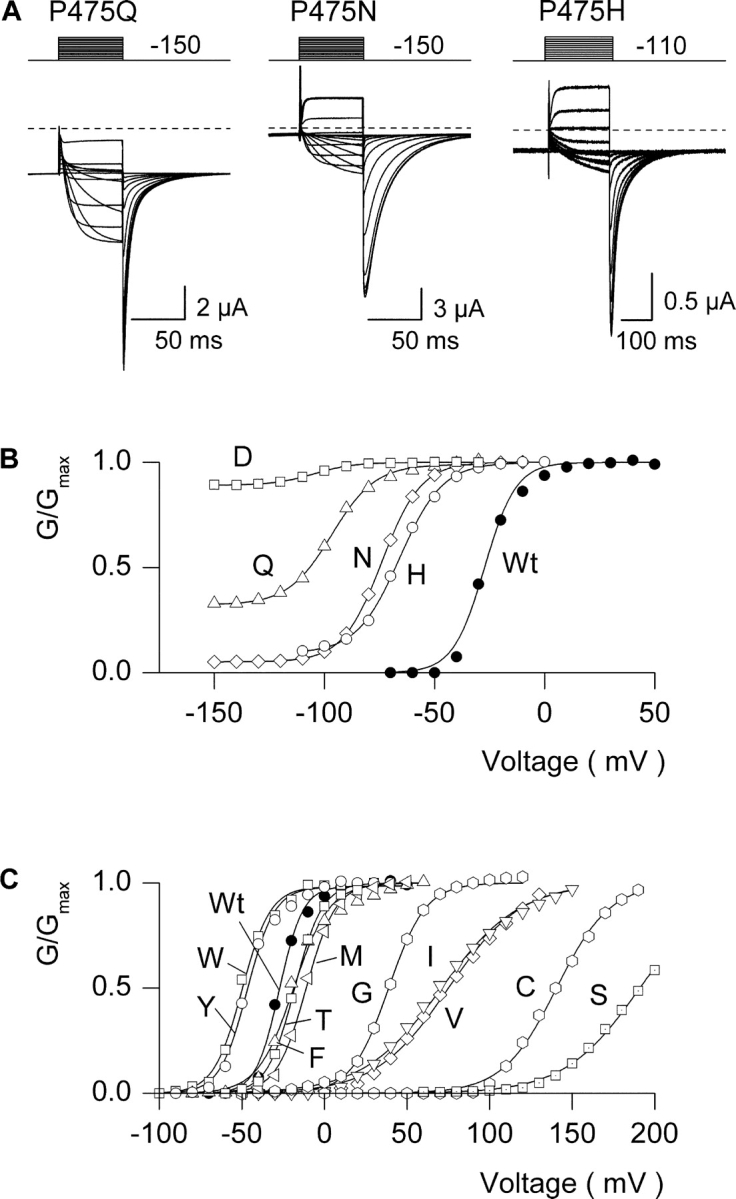Figure 3.

Gating properties for different substitutions at P475 in the Shaker Kv channel. (A) Families of ionic currents for three mutant Shaker channels. For P475Q and P475N, cells were held at −100 mV and stepped to −150 mV for 200 ms before the traces shown, tail voltage was −150 mV, and depolarizations were from −150 to −30 mV for Q and to −10 mV for N (each in 10-mV steps). For P475H, holding voltage was −110 mV, tail voltage was −110 mV, and depolarizations were from −110 to −10 mV (10-mV steps). Linear capacity and background conductances were identified and subtracted by blocking the Shaker channel with Agitoxin-2. Horizontal dashed lines correspond to the zero current level. (B) G-V relations for Wt and four P475 mutants displaying constitutive conduction. Normalized tail current amplitudes are plotted versus voltage of the preceding depolarization. For P475D the external solution contained 50 mM KCl and for all others 50 mM RbCl was used. Smooth curves are single Boltzmann fits to the data with parameters as follows: Wt, V50 = −27.3 mV, z = 3.6; P475D, V50 = −104 mV, z = 2.8; P475Q, V50 = −96.7 mV, z = 2.6; P475N, V50 = −73.9 mV, z = 2.9; P475H, V50 = −65.9 mV, z = 2.6. (C) G-V relations for Wt and 10 P475 mutants with undetectable constitutive conduction. Parameters for single Boltzmann fits are: P475W, V50 = −49.9 mV, z = 3.0; P475Y, V50 = −46.8 mV, z = 3.1; P475F, V50 = −19.0 mV, z = 2.4; P475T, V50 = −18.1 mV, z = 3.0; P475M: V50 = −11.1 mV, z = 2.8; P475G, V50 = +39 mV, z = 2.3; P475I, V50 = +71 mV, z = 1.1; P475V, V50 = +75 mV, z = 1.1; P475C, V50 = +141 mV, z = 1.6; P475S, V50 = +191 mV, z = 1.1.
